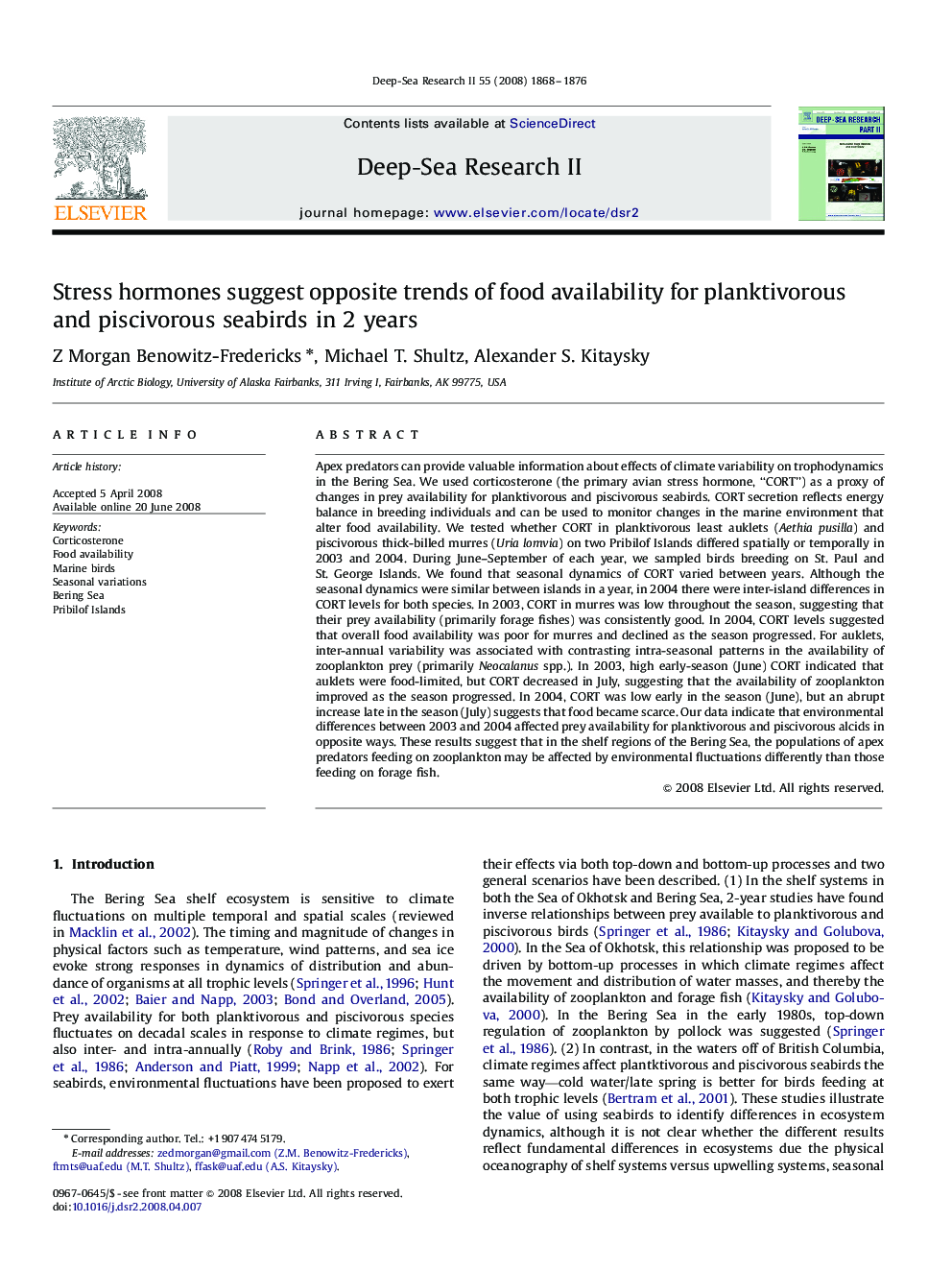| کد مقاله | کد نشریه | سال انتشار | مقاله انگلیسی | نسخه تمام متن |
|---|---|---|---|---|
| 4537399 | 1626493 | 2008 | 9 صفحه PDF | دانلود رایگان |

Apex predators can provide valuable information about effects of climate variability on trophodynamics in the Bering Sea. We used corticosterone (the primary avian stress hormone, “CORT”) as a proxy of changes in prey availability for planktivorous and piscivorous seabirds. CORT secretion reflects energy balance in breeding individuals and can be used to monitor changes in the marine environment that alter food availability. We tested whether CORT in planktivorous least auklets (Aethia pusilla) and piscivorous thick-billed murres (Uria lomvia) on two Pribilof Islands differed spatially or temporally in 2003 and 2004. During June–September of each year, we sampled birds breeding on St. Paul and St. George Islands. We found that seasonal dynamics of CORT varied between years. Although the seasonal dynamics were similar between islands in a year, in 2004 there were inter-island differences in CORT levels for both species. In 2003, CORT in murres was low throughout the season, suggesting that their prey availability (primarily forage fishes) was consistently good. In 2004, CORT levels suggested that overall food availability was poor for murres and declined as the season progressed. For auklets, inter-annual variability was associated with contrasting intra-seasonal patterns in the availability of zooplankton prey (primarily Neocalanus spp.). In 2003, high early-season (June) CORT indicated that auklets were food-limited, but CORT decreased in July, suggesting that the availability of zooplankton improved as the season progressed. In 2004, CORT was low early in the season (June), but an abrupt increase late in the season (July) suggests that food became scarce. Our data indicate that environmental differences between 2003 and 2004 affected prey availability for planktivorous and piscivorous alcids in opposite ways. These results suggest that in the shelf regions of the Bering Sea, the populations of apex predators feeding on zooplankton may be affected by environmental fluctuations differently than those feeding on forage fish.
Journal: Deep Sea Research Part II: Topical Studies in Oceanography - Volume 55, Issues 16–17, August 2008, Pages 1868–1876